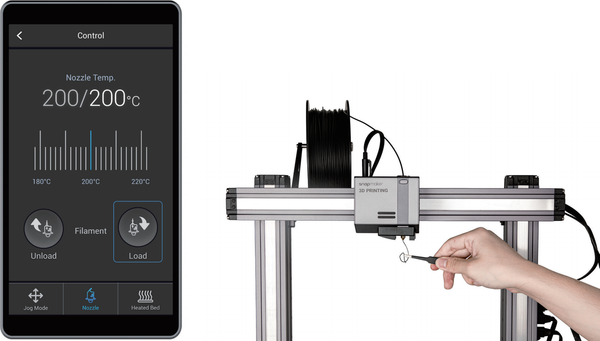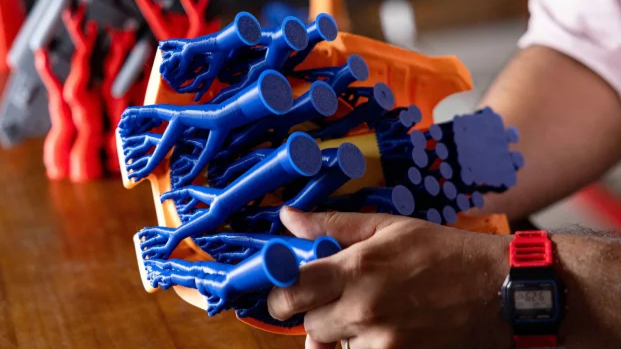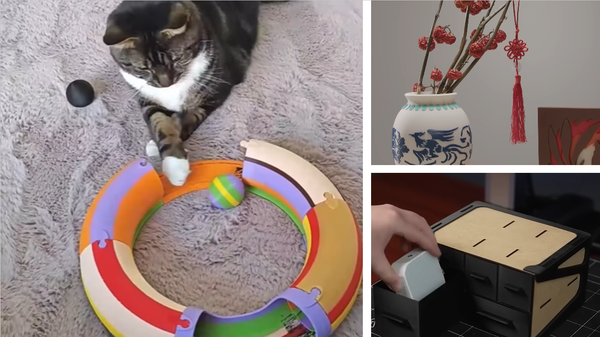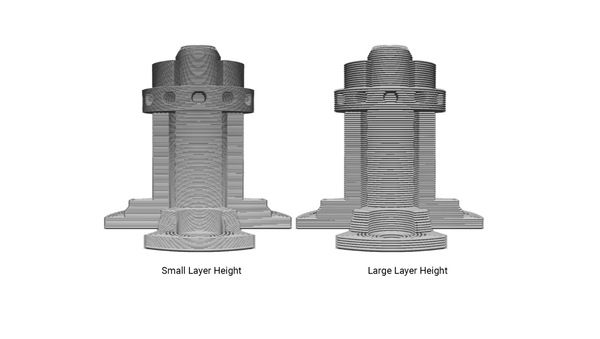Strongest 3D Printer Filament: The Ultimate Showdown (2025 Tested)
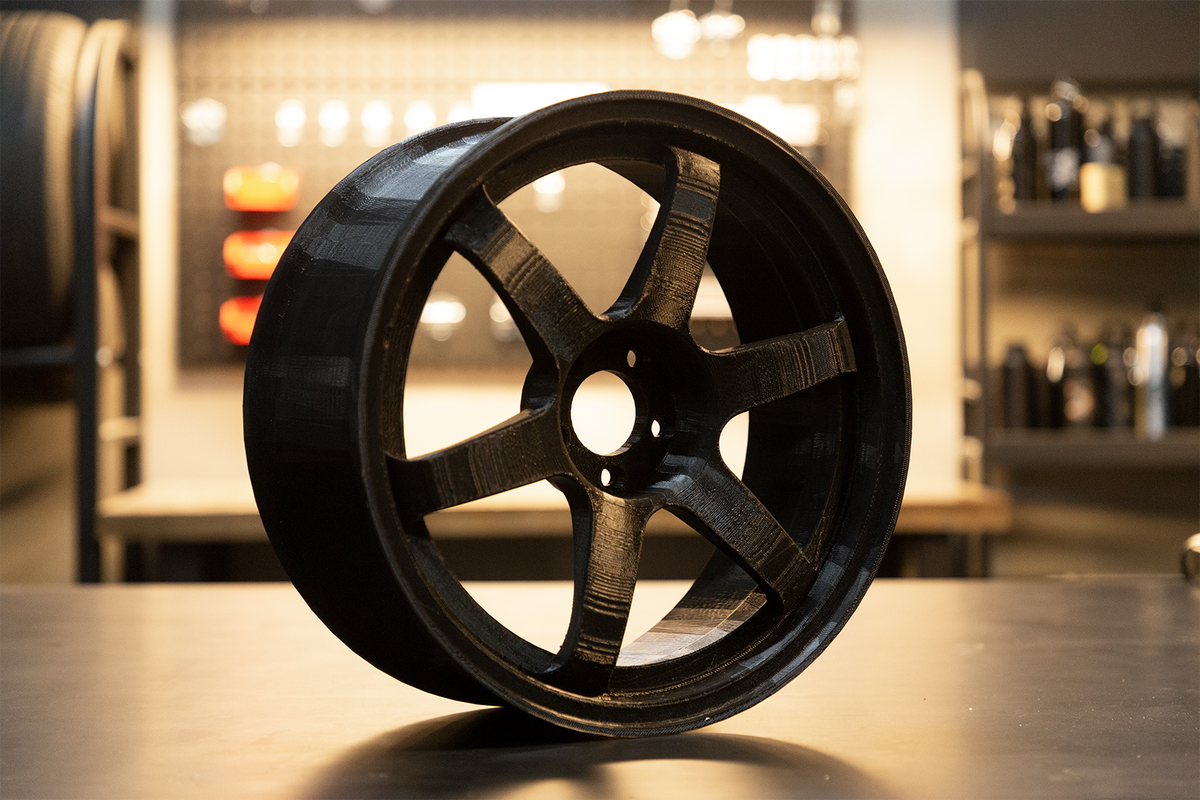
Are you searching for a 3D printer filament that can match or even surpass the strength of metal? In the world of high-performance 3D printing, strength is measured in megapascals (MPa). Today, the emergence of cutting-edge materials has dramatically transformed industrial applications.
Among the many options, materials like carbon fiber nylon, polycarbonate (PC), and PEI stand out for their exceptional performance. Specifically, carbon-fiber-filled Nylon PA12 has become a leader among FDM materials due to its excellent strength-to-weight ratio.
This blog post will take a deep dive into the strongest 3D printing materials available on the market in 2025. We will combine test data from the Snapmaker lab with authoritative third-party research to provide you with a clear performance analysis. Whether you need materials that are resistant to high temperatures, impacts, or chemicals, this article will help you find the best choice for your project and show you how to use your Snapmaker printer to achieve these high-strength creations.
How We Measure 3D Printing Strength in 2025
To ensure the reliability of 3D printed parts in various applications, it is crucial to measure their strength accurately. Unlike traditional manufacturing processes, the unique layered structure of 3D printing requires specialized testing methods.
- Tensile Testing: This is the foundation of material evaluation. By applying tension to a "dog-bone" shaped specimen until it breaks, we can obtain key data such as tensile strength, yield strength, elongation at break, and Young's modulus. Testing for plastic materials typically follows the ASTM D638-14 standard, while metal materials adhere to ASTM E8/E8M-09.
- Impact Strength Testing: Through Izod or Charpy impact tests, we can understand a material's ability to absorb energy during a sudden impact, which is essential for assessing its toughness.
- Flexural Strength Testing: A three-point bending test determines a material's ability to resist bending forces by simultaneously evaluating its compressive and tensile properties.
Printing parameters, such as layer height, print orientation, and infill density, also have a significant impact on the final strength of the part. Standardized testing allows us to compare the performance of different materials fairly.
An Analysis of 8 Top High-Strength 3D Printing Materials
Based on Snapmaker's internal testing and extensive industry data, we have compiled a list of the 8 strongest 3D printing materials currently on the market.
Important Disclaimer: This list includes a variety of materials. Of these, Carbon Fiber Nylon (PA12 CF) and Polycarbonate (PC) have been thoroughly tested in the Snapmaker lab, and we have verified their excellent performance on Snapmaker printers. Data for the other materials is cited from authoritative third-party research institutions and manufacturers to ensure the information is comprehensive.
1. Carbon Fiber Nylon (PA12 CF)
- Snapmaker Compatibility: Compatible
- Printing Recommendations: A hardened steel nozzle is required (as carbon fiber is abrasive). We recommend using the Snapmaker J1 or an Artisan with its enclosure.
PA12 CF is known for its incredible strength-to-weight ratio, with a tensile strength of up to 70 MPa. It combines the chemical resistance of nylon with the rigidity of carbon fiber, making it ideal for lightweight yet durable functional parts. In our tests at Snapmaker, we found that it exhibits minimal warping during printing, and the finished parts can withstand temperatures up to 150°C.
2. Polycarbonate (PC)
- Snapmaker Compatibility: Compatible
- Printing Recommendations: Printing inside an enclosure is highly recommended to prevent warping and enhance layer adhesion.
PC is renowned for its exceptional toughness and impact resistance, with a tensile strength of up to 9,800 psi. It maintains its structural integrity at temperatures up to 150°C. Although PC requires higher printing temperatures (nozzle at 260-300°C, heated bed at 80-110°C), this is well within the capabilities of Snapmaker's flagship models. The resulting parts are not only strong but also naturally transparent.
Data for the following materials are cited from third-party sources. Their printing requirements often exceed the capabilities of desktop-grade 3D printers.
3. PEEK (Polyetheretherketone)
- Snapmaker Compatibility: Incompatible
- Reason: PEEK requires nozzle temperatures of 360-400°C and an actively heated chamber, which exceeds the specifications of current Snapmaker hardware (max 300°C).
PEEK is the king of heat resistance, capable of continuous use at 250°C. It is primarily used in demanding industrial fields like aerospace and medical, requiring professional industrial-grade 3D printers.
4. ULTEM 1010 (PEI)
- Snapmaker Compatibility: Incompatible
- Reason: ULTEM's printing requirements are similar to PEEK, needing nozzle temperatures of 340-380°C, far beyond Snapmaker's supported range.
ULTEM 1010 offers excellent thermal stability and inherent flame retardancy, making it another high-performance polymer for industrial use.
5. Stainless Steel 17-4 (DMLS Technology)
- Snapmaker Compatibility: Incompatible
- Reason: This is a metal powder bed fusion technology (DMLS), which is entirely different from the Fused Deposition Modeling (FDM) technology used by Snapmaker.
17-4 stainless steel printed via DMLS achieves a remarkable tensile strength of up to 1372 MPa, suitable for end-use metal parts.
6. Aluminum AlSi10Mg (SLM Technology)
- Snapmaker Compatibility: Incompatible
- Reason: Similar to stainless steel, this also falls under the category of metal 3D printing, requiring Selective Laser Melting (SLM) equipment.
Aluminum alloy is lightweight and strong, with excellent performance after heat treatment, and is widely used in the automotive and aerospace industries.
7. EPX 82 Resin (Carbon DLS Technology)
- Snapmaker Compatibility: Incompatible
- Reason: This is a photopolymer resin that requires specific vat polymerization 3D printing technologies, such as Carbon DLS.
EPX 82 resin combines toughness with heat resistance and is often used for parts like automotive connectors.
8. CE 221 Cyanate Ester Resin
- Snapmaker Compatibility: Incompatible
- Reason: This is another high-performance resin that requires specialized industrial equipment for printing.
CE 221 boasts a heat deflection temperature of 231°C, making it an ideal choice for extreme high-temperature applications.
How to Successfully Print High-Strength Materials on a Snapmaker
While many materials on the list are industrial-grade, two powerful options, Carbon Fiber Nylon (PA12 CF) and Polycarbonate (PC), can be mastered with your Snapmaker printer. The key is to use the correct settings and appropriate accessories.
- Temperature is Key: Snapmaker printers support nozzle temperatures up to 300°C and heated bed temperatures up to 110°C, providing a solid foundation for printing engineering materials like PC and PA12 CF.
- For PC: We recommend setting the nozzle temperature to 260-280°C and the heated bed to 100-110°C.
- For PA12 CF: The nozzle temperature can be set to 260-280°C, with the heated bed between 70-90°C.
- The Importance of an Enclosure: For materials like PC and nylon that are prone to shrinking and warping with temperature fluctuations, using the official Snapmaker Enclosure is crucial. The enclosure creates a stable printing environment, maintains a consistent ambient temperature, and significantly improves layer adhesion, resulting in stronger, more reliable prints. Experience shows that keeping the chamber temperature about 20°C below the bed temperature helps prevent heat creep while ensuring proper layer bonding.
- Necessary Hardware Upgrades: When printing with abrasive materials like carbon fiber, you must replace the standard brass nozzle with a hardened steel nozzle. This prevents rapid wear on the nozzle, ensuring print accuracy and extending its lifespan.
- Cost vs. Performance Trade-off: Compared to basic PLA (around $20/kg), high-performance materials come at a higher cost. PC typically ranges from $40-$60/kg, while carbon fiber nylon costs between $60-$80/kg. Although the initial investment is higher, the superior strength, durability, and temperature resistance they offer are well worth it for functional prototypes and end-use parts.
Conclusion
In 2025, the world of 3D printing materials offers us unprecedented possibilities. While technologies like PEEK and metal printing represent the pinnacle of strength, the real breakthrough for most makers and engineers lies in achieving high-strength prints on desktop machines.
With a Snapmaker printer, you can confidently work with professional-grade materials like Carbon Fiber Nylon (PA12 CF) and Polycarbonate (PC) to create robust and durable functional parts. The key to success is understanding the material properties and fully leveraging the hardware capabilities Snapmaker provides—precise temperature control, a reliable official enclosure, and necessary nozzle upgrades.
Ultimately, the "strongest" material for your project is the one that strikes the perfect balance between mechanical properties, printability, and cost. We hope this guide helps you take the strength and durability of your next creation to a new level.
Ready to push the boundaries of what's possible with your creations? High-strength materials are more accessible than ever, and Snapmaker is here to help you succeed. Explore our lineup of powerful and versatile 3D printers, and discover our range of high-performance filaments. Visit snapmaker.com today to learn more and start bringing your most demanding projects to life.

